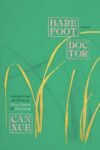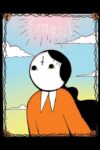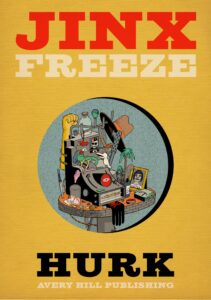
[Avery Hill Publishing; 2021]
Here is a story about many stories about the city of Riviera. Jinx Freeze is a graphic novel by Lord Hurk, a self-styled comicsmith, who brings together a mad cast of characters disturbed and distorted in various ways, reflecting on the messed-up ways of their city. To be clear, Riviera itself, may or may not be a real place. One of the coastal regions in England is referred to as the Riviera. However, its correspondence to the setting of Jinx Freeze is immaterial, for the space that Hurk has fleshed out is a version of any real city projected onto a surreal one. Its inhabitants are the different parts of an investigation of a sensational heist from the city’s art gallery: An arm from a precious work of sculpture goes missing and different parties are after it. Related to the heist is an art exhibition that seems to have a lot of suspicious activity going on. For instance, people who tend to go into the exhibition do not come out, at least not alive. The question surrounding the plot is: Who is the thief? Which of the characters on the mission can crack it? As readers discover the answer, they encounter even more interesting questions: What is the relationship between art and crime? And tangential to this question of plot are other artsy questions such as: What are comics? What is poetry?
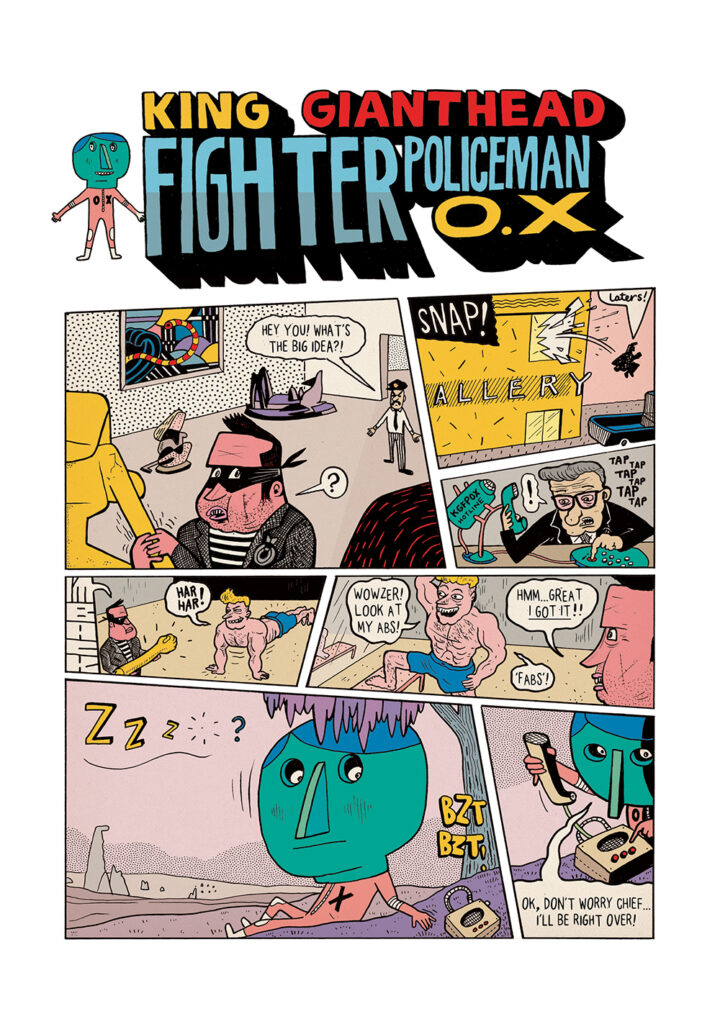
The plot begins with (well, it begins with a “not an introduction” too) a conversation between a cop and an ex-mayor, both of whom seem to be corrupt. The next thing we know, an art gallery is broken into and the cop is called to trace it. What follows is a complex turn of events in which the cop and the curators of the gallery rope in a range of sleuths, who pursue different leads: a cyborg, an investigator who works with the help of animals, a space priest (“Thank fuck the lord he agreed to return to Earth”), a professional detective, another detective wrongly accused of going rogue, a gang of four, and so on. I found myself needing to go back and forth to see who re-emerges where to take the hunt further, and to what end. It is an interesting roller-coaster ride in darkness and danger haunting the city and its people.
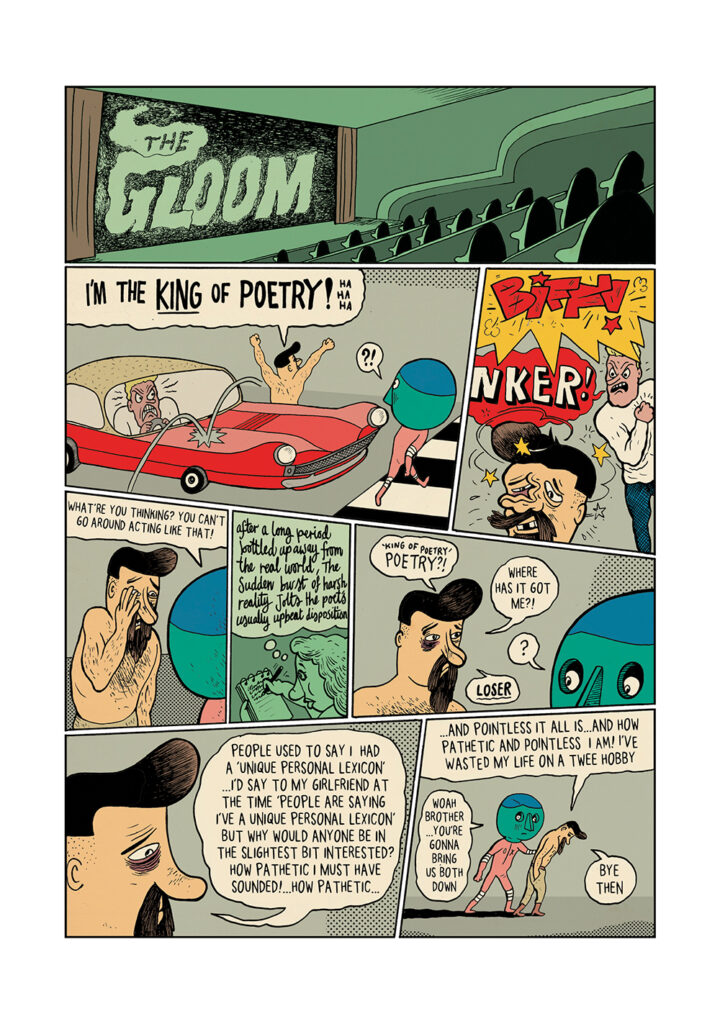
Accompanying the crime is a series of musings on art. For instance, “poetry + graphic design / sense * a lifetime – friends = comics.” It’s presented in the form of a formula within a panel. Accompanying the definition is an illustration of poetry through a doggerel: “The night was Friday, cheers was on telly / Chicken nuggets from bejams for my belly,” and so on.
Then there is a take on the famous British campaign for the recruitment of soldiers during World War I, saying “Your country needs you.” The campaign here takes a very different turn: “Fascists, your country needs you to fuck off.” The crime and the investigation seem to become an occasion to explore these other musings on social life; these are funny and satirical and even help anchor the reading in different ways amidst what is otherwise disjointed scenes from the cityscape.
Here is another take on such propaganda campaigns. The city cop comes up with a gimmick to attract public support: “Help the police. Don’t fuck them.” One can’t help guffawing at the statement. The hoardings are put up by the cop who is corrupt. He knows all too well what the public thinks of the police!
Hurk keeps it funny in such moments as a way of managing the strangeness of life lived in Riviera. There is a “sex mad” ward in the city hospital, the in-charge of which does not approve of anyone having sex anywhere in it. Along with Loghead, who imprisons a poet (and in a bottle!) because he has a grudge against poetry, this romance-prohibiting hospital ward in-charge is a symptom that something is wrong with the city. The cyborg is a curious being. He has strange dreams, one about a “criminal car.” His turn to a dream analysis workshop proves to be “a dream of an analysis workshop”!
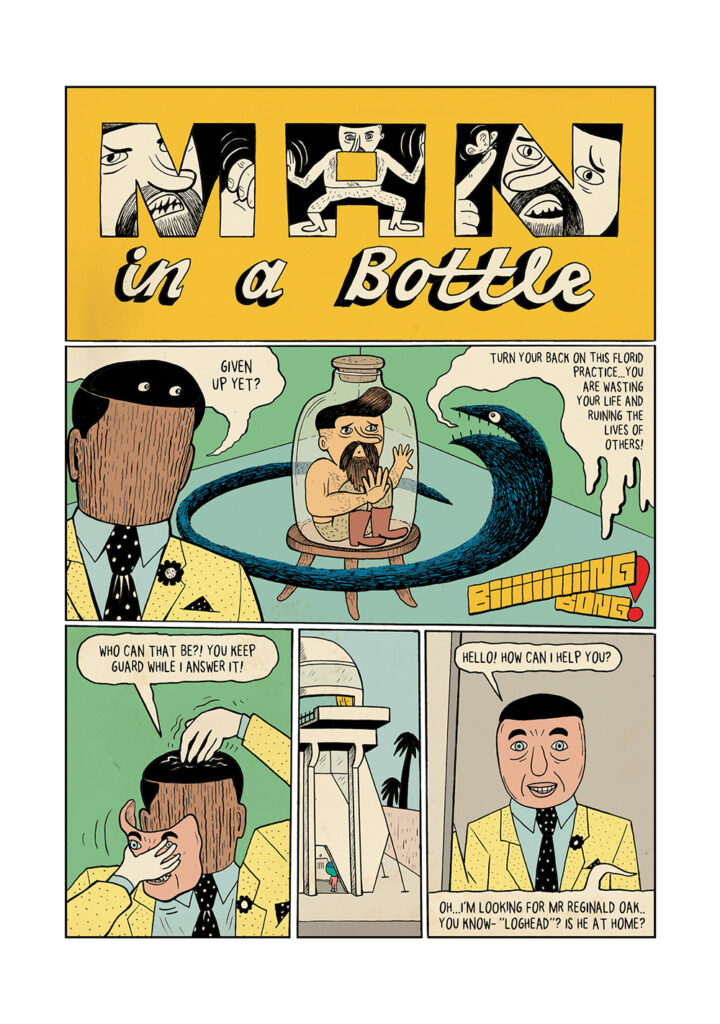
The artwork mirrors the diversity of characters and disjointedness of the narrative. For instance, the panels and pages depicting the crime and the criminal have very little dialogue and are joined/separated by slanting lines giving the impression of a distorted world. The verbal exchange is made up of squiggles and formulae, as befitting a shady transaction. The subplot with the poet, on the other hand, is verbose, full of “florid semantic spewings” that his kidnapper Loghead detests.
Given the scale of the representation of the city as manifested in the substories, not all of it turns out well. Some sleuths die, while one manages to solve the crime as well as find a fresh start in life. The strangest of things happens with the cyborg. He continues to pursue analyses of his dreams, but towards the end, decides to take a break from it all.
Jinx Freeze is funny and thrilling. With musings on poetry and art on the one hand and its critique on the other, the plot has its downs within its ups. The wide range of characters calls for a great variety in the artwork. Thus, meeting the demands of representing a crazy city inhabited by enthusiasts of art and science, poets, cyborgs, criminals, sleuths—all extreme characters—Hurk’s novel captures the visual cacophony of Riviera. It will be especially hilarious to those who get all of its allusions: from the war time propaganda and the historical 1851 exhibition, to Beyoncé and Captain Kirk. Welcome to a dysfunctional society!
Soni Wadhwa teaches English at SRM University, Andhra Pradesh, in India. She is a regular contributor to Asian Review of Books.
This post may contain affiliate links.





